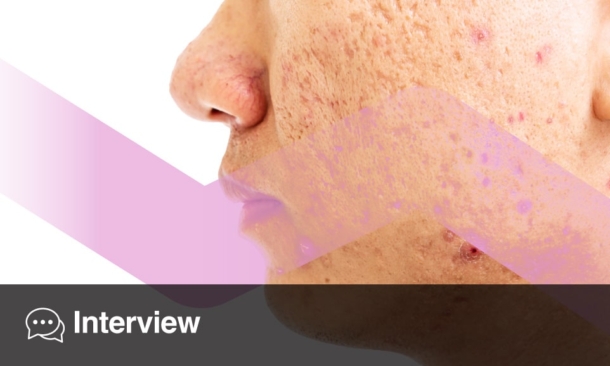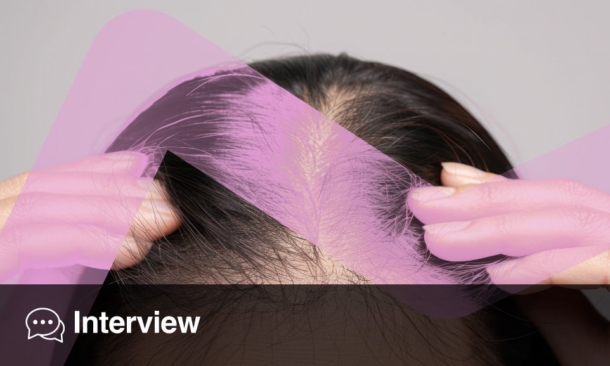Meeting Summary
During this symposium, an expert panel comprising both practising dermatologists and leading figures in epigenetics research discussed the development of an innovative new approach to treating facial skin ageing based on the underlying science of epigenetics. Frank Lyko, Professor of Epigenetics at the University of Heidelberg, Germany, explored the epigenetic processes that drive skin ageing and highlighted how the reversibility of the DNA methylation changes may provide novel opportunities for intervention. Elke Grönniger and Julia Gallinger from Beiersdorf AG, Germany introduced the skin-specific age clock as an AI-based algorithm to determine the biological age of skin and to search for new ingredients which can reverse the skin age. They outlined how this led to the discovery of the key active ingredient (Epicelline®, Beiersdorf, Hamburg, Germany) in the new Hyaluron-Filler Epigenetic Serum (Eucerin®), a breakthrough epigenetic innovation that is able to visibly reverse ten clinical signs of skin ageing. Firas Al-Niaimi, Professor in laser dermatology at St John’s Institute of Dermatology, London, UK, discussed the potential for Epicelline to be combined with other anti-ageing aesthetic procedures, such as fractionated laser, due to synergistic effects on the expression of youthful genes. Finally, Hassan Galadari, Associate Professor of Dermatology at the United Arab Emirates University, provided case study examples showing the successful use of Epicelline in combination treatment with chemical peel, microneedling, and injectables in real-world clinical practice.
Skin Ageing
Firas Al-Niaimi
Historic depictions of the fountain of youth highlight the ongoing search for solutions to the problem of facial ageing. Al-Niaimi outlined the characteristic signs of facial ageing, which include fine lines, wrinkles, loss of elasticity, loss of skin turgor (firmness), loss of radiance (dullness), pigment alteration (telangiectasia), and skin laxity (sagginess). He explained that, slowly over time, these changes to the skin become more visible.
Research into factors influencing the ageing process has revealed that gene function plays a key role.1 Ageing involves a progressive decline in the expression of certain genes, which are involved in multiple biological processes relevant to the ageing phenotype.1 This was evidenced in a study of Caucasian females carried across 6 decades in which younger-looking subjects showed similar gene expression patterns to those observed in chronologically younger individuals.2 Although external factors such as sun exposure may influence specific genes, this is different from chronological ageing, Al-Niaimi pointed out. Key pathways linked to the ageing process include those involved in energy metabolism, oxidative stress, cellular senescence, and inflammation.2
Overall, ageing is a complex process that involves a decline in the expression of multiple genes involved in underlying biological pathways that ultimately define how we age and how fast.3 “Now that we understand we age because of our genes, how can we turn back the clock and reactivate those genes?” Al-Niaimi asked. He suggested that the answer may lie with Epicelline.
How Epigenetic Changes Drive Skin Ageing
Frank Lyko
Lyko provided an introduction to the concept of epigenetics, a young and highly dynamic field of research, and detailed the scientific findings that led to the discovery of Epicelline.
Using the analogy of a computer hard drive and an operating system, Lyko described the genome as the sum of all the genetic information at the body’s disposal and epigenetics as the mechanism that tells cells which part of this information to access and use under specific conditions. He explained that the human body contains over 100 cell types, all of which can be traced back to a single pool of stem cells. All these cells share one common genome but can have vastly different cellular phenotypes. The process of cellular differentiation is mediated by epigenetic mechanisms that specify cell fates, the most important being DNA methylation, histone modifications, and regulatory RNAs.
Lyko focused on DNA methylation, which he described as the best understood of the epigenetic regulatory mechanisms. This key epigenetic modification involves a simple covalent modification of the cytosine base in DNA, which then carries a methylation mark at the carbon 5 position.4 Although the human genome contains approximately 30 million of these methylation marks, this equates to only 4% of all cytosine residues overall. So, it is the distribution of these markers that matters, Lyko emphasised. In essence, DNA methylation writes an ‘epigenetic barcode’, which then regulates context-dependent gene expression.
Epigenetic clocks, which Lyko described as a ‘transformative innovation in the field’, are composite biomarkers based on extrinsic and intrinsic changes in DNA methylation patterns.5 Using 353 DNA methylation markers, an ageing clock was developed that is able to predict the donor age of a sample with an accuracy of +/- 3.6 years.6 Disease and inflammation increase the ticking rate of epigenetic clocks, Lyko explained, while healthy lifestyles are associated with age deceleration. This illustrates the power of age clocks to dissect ageing mechanisms and attempt to develop intervention strategies, he added.
As the outermost organ of the human body, the skin is the most environmentally exposed and therefore shows a prominent environmental ageing phenotype.7 Epigenetics provides an interface between the environment and the genome, so environmental factors can directly affect DNA methylation, Lyko observed. He outlined three examples of collaborative research with Beiersdorf over the past 15 years that has sought to understand how DNA methylation patterns change during skin ageing. The first study analysed methylation patterns from young and old dermis samples and found a noticeable increase in age-related hypermethylation.8 This shows that the ageing skin accumulates methylation markers in positions where they are not supposed to be, Lyko remarked. These findings were confirmed in a follow-up study that used transcriptome and whole-genome bisulfite sequencing data to generate high-resolution maps of the human skin epidermis.9 Methylation was found to be consistently higher for several skin-related genes in the old versus young epidermis, which was associated with a decrease in gene expression.9 This is the textbook picture of how methylation affects gene expression, Lyko elaborated. Another large follow-up study analysed dozens of human skin samples and again showed clear differentiation between the young and old epidermis, with the latter characterised by increases in methylation.10 The DNA methylation patterns in the ageing human epidermis also appear less well-defined than in younger samples, a phenomenon known as epigenetic erosion.11
Summing up, Lyko reiterated that skin ageing is associated with moderate but significant changes in DNA methylation. These age-related methylation changes are directly linked with changes in age-related gene expression. This is important because methylation is not just a marker for ageing, it also has functional consequences, he emphasised. Overall, skin ageing is underpinned by increased DNA methylation and less well-defined methylation patterns. The sum of this research therefore provides a compelling rationale for developing intervention strategies based on the reversibility of these methylation markers, Lyko concluded.
Revolutionary Discovery of Epicelline to Reverse Clinical Signs of Skin Ageing
Elke Grönniger and Julia Gallinger
Both lifestyle and the environment can affect body and skin function by regulating gene expression, Gallinger explained. She highlighted monozygotic twins as a tangible example of this, sharing exactly the same DNA but often following very different skin ageing journeys. These differences in ageing are due to unique epigenetic markers which form on the DNA over the course of a lifetime and work as a molecular switch, turning on and off the expression of certain genes.12
We now know that epigenetic changes, especially DNA methylation, are one of the main drivers for ageing, Grönniger explained. As pioneers in this field, Beiersdorf was the first to identify genome-wide epigenetic changes associated with skin ageing in 2010.8 This research showed that hypermethylation occurs in the DNA of aged skin and that these epigenetic changes are associated with reduced expression of the corresponding genes.8,9 The genes that are silenced as a result of DNA methylation contribute to several important and diverse functions in the skin, including extracellular matrix organisation and regulation of lipids and metabolism, which explains the resulting loss of tissue functionality.13 Put simply, the youth genes are switched off, Gallinger emphasised, and “this is the main driver of skin ageing”.
Over the past 15 years of research, Beiersdorf has published key scientific findings on epigenetics and skin ageing in 15 peer-reviewed publications. The main milestone and highlight of this epigenetic journey was the development of the first skin-specific age clock. Grönniger described age clocks as AI-based algorithms that use epigenetic patterns to determine a person’s biological age, which can be different to their chronological age. To create this first skin-specific age clock, data were collected on more than 1,000 skin samples and a total of 850,000 data points per sample were analysed.10 The resulting clock is able to accurately measure the biological age of the skin, including the youthfulness of skin cells and the potential to build up younger skin tissue.10 Now, for the first time, there is a tool to objectively detect and predict biological skin age, Grönniger explained. This marks a revolution in ageing science because “you can’t optimise what you can’t measure,” she added. In a recently published study, the skin-specific age clock was used to successfully predict biological skin age in subjects with the same chronological age, with results matching expert panel assessment of perceived visual age.14
This patented skin-specific age clock technology is clinically relevant because it provides a new way to search for active ingredients with the ability to reverse epigenetic changes of skin ageing and reactivate deactivated youth genes, Grönniger explained. Up to now, Beiersdorf has screened more than 50,000 ingredients and identified Epicelline, which she described as the first cosmetic ingredient able to turn back the age clock and rejuvenate the skin’s cells to support younger-looking skin.
Grönniger went on to share recently published data on Epicelline, known by the chemical name dihydromyricetin (DHM), which is extracted from vine tea. In vitro studies in keratinocytes treated with 20 μM Epicelline for 3 days demonstrated its ability to restore the youthful epigenetic pattern and significantly reduce the biological age of skin cells (Figure 1A).13 This was followed by a clinical study providing the first in vivo evidence of the rejuvenating effect of Epicelline on the epigenetic pattern.13 In this study, Epicelline or vehicle was topically applied to the skin and an ageing stimulus (UV light) was applied. Treatment with Epicelline induced a DNA methylation pattern representative of the young epidermis for more than 95% of the age-related DNA methylation probes analysed (Figure 1B).13 The epigenetic changes induced by Epicelline therefore shift in the direction of a young-like skin profile, Grönniger explained.
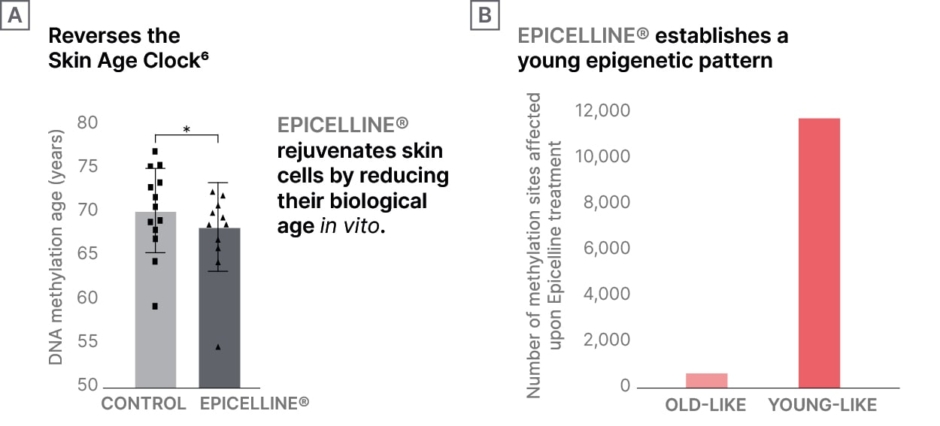
Figure 1: (A) Epicelline reverses the skin age clock; and (B) Epicelline establishes a young epigenetic pattern.
As Grönniger explained, the next step was to determine whether restoration of the epigenetic profile with Epicelline had a beneficial effect on the gene expression profile in vivo. The ensuing clinical study employed a set of marker genes that are hypermethylated and downregulated in aged skin.13 Topical application of Epicelline induced the reactivation of these silenced youth genes in the treated skin.13 Of note, key genes that were switched back on by Epicelline treatment included those significantly correlated with in vivo wrinkle grade.13
Overall, this evidence supports the ability of Epicelline to visibility reverse signs of ageing in the skin by reactivating silenced youth genes, reversing epigenetic changes, and rejuvenating skin cells, Grönniger summarised (Figure 2).
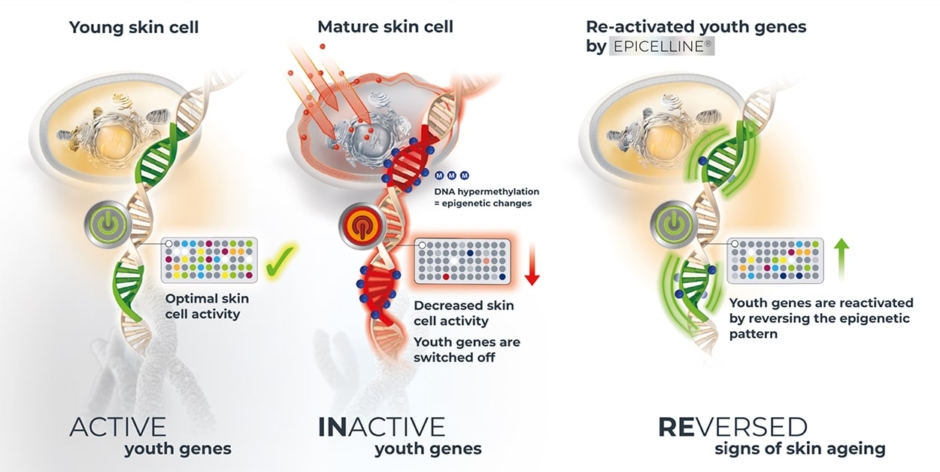
Figure 2: Epicelline is the first active ingredient proven to reverse the skin age clock.
Epicelline is available as an epigenetic serum combined with other key ingredients in a holistic formula. As Gallinger outlined, this multifaceted product contains hyaluronic acid (HA) in both long and short chain molecular sizes (2,000 kDa and 52 kDa), which acts to hydrate the skin and biostimulate epidermal HA production. Other active agents in the epigenetic serum include enoxolone, which reduces HA degradation in the skin associated with ageing and promotes DNA repair, and glycine saponin, which biostimulates dermal HA production as well as collagen and elastin, she added.
The efficacy of this Hyaluron-Filler Epigenetic Serum has been proven in clinical studies with twice daily application, with treatment producing a reversal in ten signs of skin ageing. Results after 4 weeks of twice daily use showed positive effects on skin firmness, wrinkle volume reduction, hydration, lifting effect, smoothness, evenness, radiance, fine line reduction, contours, and rejuvenation. Focusing on two of these parameters, Gallinger explained how cutometry measurements revealed a significant increase in skin firmness with treatment in 88% of participants, which was reflected in an increase in epidermal thickness in the 3D skin model in vitro. Epicelline restores epidermal thickness, indicating that cells are active again and working as they do on younger skin, she added. When the length, area, and depth of different wrinkles in the face were measured in a clinical study of 43 subjects with wrinkle analysis based on 3D data, up to 78% reduction in wrinkle volume was achieved after 4 weeks of treatment with the Epigenetic Serum (Figure 3).15
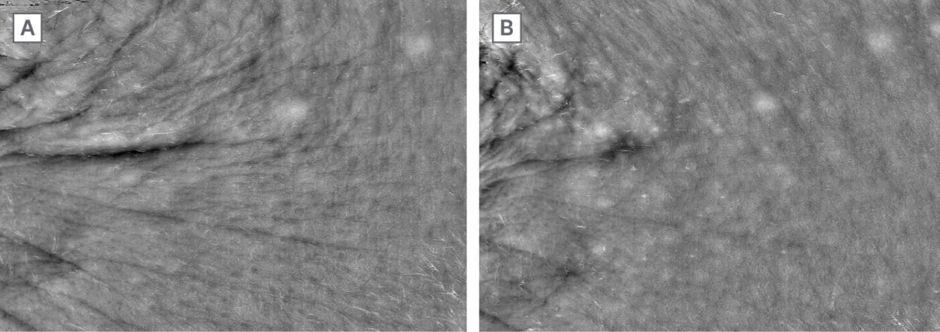
Figure 3: Reduction in wrinkle volume with the Hyaluron-Filler Epigenetic Serum.15
Patient feedback on the Hyaluron-Filler Epigenetic Serum has been favourable. Gallinger highlighted results from a patient survey in which 98% of women confirmed it visibly reverses signs of ageing, and patients agreed that it makes the skin look up to 5 years younger. Using a quality of life questionnaire, 63% of 160 volunteers said their skin appearance gave the impression of being attractive after using the serum for 4 weeks, illustrating the potential improvements in patients’ quality of life, which can be obtained with treatment.16 As to how to use the Epigenetic Serum, Gallinger advised that it be applied twice daily, in the morning and evening, as the base/starting point of a skincare routine. The Epigenetic Serum can be combined with other products from the Hyaluron-Filler range and Eucerin(R) Photoaging Control SPF 50+ and, importantly, can also be used as integrated skin care after aesthetic treatments, she noted.
Combining Epicelline with Aesthetic Procedures
Firas Al-Niaimi
Al-Niaimi explored in more detail how Epicelline can be used in combination with other aesthetic procedures in order to maximise the beneficial impact on facial ageing and rejuvenation. He described facial rejuvenation as a broad term encompassing any procedure which can make the skin look or feel younger, including botulinum toxin injections, dermal fillers, skin boosters, and energy-based procedures. Patients’ desire to look “younger and fresher” has increased demand for facial rejuvenation, he added, in turn fuelling increased utilisation of combination treatment approaches.
As Al-Niaimi reiterated, the process of ageing is largely dependent on gene expression. People who look younger for their chronologic age have the genes of youth turned on, while those who look older have these youthful genes switched off, he clarified.2 Evidence indicates that laser and energy-based procedures, such as broadband light treatment, can ‘turn on’ youthful genes.17 In one pilot study, multiple treatments with broadband light were shown to activate several key genes associated with youthful skin.17 Notably, these were genes involved in cell function/replication and mitochondrial activity, Al-Niaimi added, and mitochondria are known to play a pivotal role in cell senescence and how we age.
Fractional laser is a specific aesthetic procedure in which a fraction of the skin area is treated with an array of relatively small beams of light columns. Al-Naimi described how, when treated with fractional laser in the clinic, patients start to show histological improvements in wrinkles and skin quality approximately 3–6 months after the procedure. He explained that this rejuvenating effect of fractional laser technology is due to neocollagenesis, which is now known to be underpinned by changes in gene expression. Research has shown that fractional CO2 laser is able to induce gene expression in matrix metalloproteinase (MMP) production, as well as a number of other key genes including CYR61, Wnt5a, MMP-1, and HSP90.18,19 These genes play a role in favourable collagen remodelling and wound healing, in turn leading to improvements in the youthful appearance of the skin.19
Al-Niaimi stressed that it is important to do multiple fractional laser treatments in order to ‘turn on’ more youthful genes and achieve the best aesthetic results. Genes associated with ageing that can be ‘corrected’ with fractional laser fall into various pathways, including inflammation, extracellular matrix organisation, lipid metabolism, keratinocyte differentiation, and MMP production.20,21 Notably, multiple laser treatments also lead to continuous upregulation of genes such as PLIN2.20 PLIN2 is associated with mitochondrial impairment, which is associated with cell senescence, and is upregulated by both fractional laser and Epicelline treatment.22 In addition to PLIN2, five other age-related marker genes reactivated by topical Epicelline have also been described in the context of fractional laser treatment.13 This overlap of genes and pathways affected by Epicelline and fractional laser is important because, when you combine the two together, the synergy suggests giving better results, Al-Niaimi emphasised.
In addition to their areas of overlap, Epicelline and fractional laser are also able to target different genes implicated in ageing. Al-Niami described how Epicelline upregulates key genes that are negatively correlated with wrinkle grade, while fractional laser treatment upregulates genes associated with extracellular matrix formation. Epicelline and fractional laser treatment also act on different skin layers but may support each other via cellular cross-talk, he noted. The effects of Epicelline are more superficial, while fractional laser goes deeper, allowing youthful gene expression to be targeted at both levels of the skin, Al-Niaimi elaborated.
Based on our increased understanding of the gene expression patterns associated with ageing and how these can be turned on and off, it makes sense for every patient undergoing facial rejuvenation therapy to also receive topical Epicelline, Al-Niaimi concluded, because the synergism in gene expression ultimately yields better results.
A Case Study of Epigenetics in Clinical Practice
Hassan Galadari
Galadari presented selected clinical cases of Epicelline used alone or in combination with other treatments in real-world clinical practice. In these case studies, Epicelline was supplied as a non-labelled serum for twice-daily use, in conjunction with SPF application in the mornings, and participants stopped all other skin care routines for 8 weeks. In total, 20 patients (five in each group) underwent 4 weeks of treatment with Epicelline alone or in combination with chemical peel (containing 20% salicylic acid), radiofrequency microneedling, or injectables.
Galadari explained that the rationale for combining Epicelline with beta hydroxy acid peels is that salicylic acid is known to increase the penetration of other skincare actives.23 In a similar way, microneedling creates small channels that may increase the penetration of topically applied agents such as Epicelline.24 At the same time, it also activates nascent growth factors in the skin and stimulates the formation of collagen.24 Finally, Epicelline was utilised in combination with injectables, mainly fillers but also the perennially popular botulinum toxin. Galadari clarified that fillers ‘don’t just fill’ but also create a foreign body response in the skin that reactivates macrophages and stimulates the formation of new collagen via effects on fibroblasts. Although studies have shown that botulinum toxin does not stimulate fibroblasts in the same way as fillers, Galadari explained that it is able to decrease wrinkles and ‘organise’ the collagen in the skin to allow for better penetration of topicals.25,26
Overall, Galadari reported favourable experiences with the use of Epicelline alone and in combination with chemical peel, microneedling, and injectables in clinical practice. The visible antiageing benefits observed with combination treatment included a decrease in the effects of dyspigmentation and increased skin radiance.



